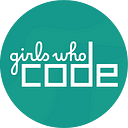Show Us The Data
The importance of tracking K-12 participation data in computer science education to bridge the gender gap through effective public policy
The gender gap in technology is nothing new. There are countless studies and articles that show that the tech industry is getting less diverse at all levels and that the pipeline can’t keep up with the demand for new workers in the industry.
To close this gap in workers, states have expanded computer science in K-12 schools at an unprecedented rate. Thirty-three states have passed policies to expand computer science classes in K-12 schools, hoping to spark interest in one of the fastest growing fields in the country and build out a tech workforce in their own state.
But what are these policies doing to close the gender gap, and create a more equitable tech future? The truth is that we don’t know.
No one really knows what our computer science classrooms look like because as states have expanded access, they have not been tracking participation by girls and other underrepresented groups. There are policies that mandate that all high schools offer computer science courses, and millions of dollars in funding available to expand schools’ capacity to teach computer science, and yet, states have no idea if these policies are expanding the tech pipeline to include the people that are currently being left out.
That’s why Girls Who Code wants every state to require districts to report what computer science courses are being taught, and more importantly, who is taking these courses. We know that the gender gap is not the only gap that exists in computer science. Creating effective public policies that create the rising tide to lift all boats means that we must be able to measure their success — and data tracking is the first step to ensuring equity for all in computer science.
Washington state recently introduced a bill requiring districts to track participation data (Bill: SB 5574/HB 1577) and this is a huge step toward closing the gaps. This bill requires that the state get a complete picture of their computer science classrooms, from who is taking them to who is teaching them, and what schools are even offering computer science courses. This is a key first step to ensuring that as access expands, it does so in a way that serves all students.
What gets measured gets managed, and you can’t change what you can’t see. There is a wealth of data that gets measured in our schools — on discipline, on achievement, on attendance, on graduation rates — and it is only through this data that we are able to identify gaps, and create interventions to close them. Knowing that huge equity gaps exist in computer science jobs and higher education, we must ensure that our schools are not perpetuating these gaps as they expand computer science. Using data to shine a light on the gaps is the first step toward creating policies and interventions that will effectively close the gender gap and bring girls into the forefront of computer science classrooms.
Learn more about what Girls Who Code’s four policy recommendations for lawmakers across the country committed. These recommendations are designed to close the gender gap in tech and specifically to attract girls in K-12 to, and retain them in, computer science.
